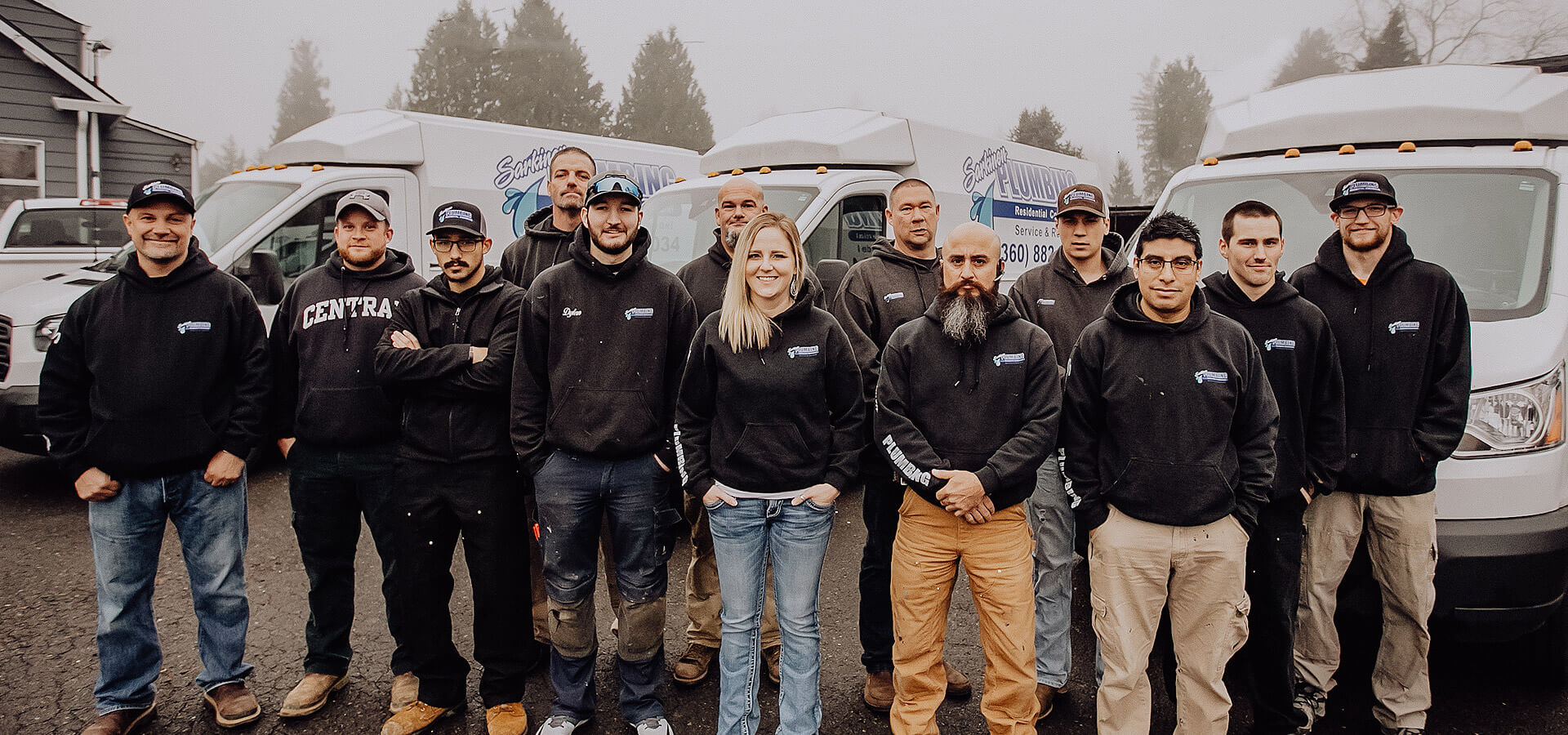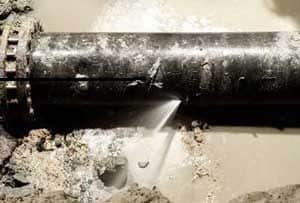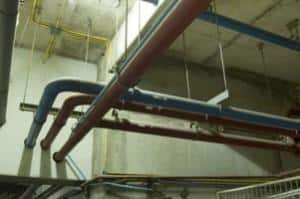- Vancouver 360-369-3586
- Portland 503-925-3504
- Fast No Obligation Estimate
- Home
- About
- Plumbing Services
- Emergency Plumbing
- Drain Cleaning
- Leak Detection & Repair
- Sewer Line Repair
- Repiping
- Trenchless Pipe Repair & Replacement
- Water Heater Repair
- Water Heater Installation
- Main Water Line Repair
- Main Water Line Replacement
- Garbage Disposal Repair & Installation
- Faucet & Fixture Installation
- Toilet Installation
- Trenchless Boring Services
- New Construction
- Commercial Plumbing
- Water Filtration and Softening
- Water Damage Restoration
- Electrical
- Heating & Cooling
- Restoration
- Service Area
- Reviews
- Coupons
- Contact Us
- Membership

Why Leak Detection is Important
by Sarkinen Plumbing | Oct 30, 2018
What you need to know about leaking pipes
Your plumbing is in one sense the circulatory system of your home. It delivers the water that you need to drink, cook, bathe and clean your laundry and dishes. The pipes even help your lawn and garden to stay vibrant and lively. A leak might seem like a small issue at first, but leak detection and repair is very important because what looks to be a small problem like a leak can quickly turn into something far more serious.
The consequences of an unchecked leak

The raging leak that floods your basement likely didn’t start out as a large gash gushing torrents of water. Many big problems begin as smaller issues. Your leaks might initially be just a slow drip that’s so slow that you can seemingly keep it in check with a five-gallon bucket. The problem is that over time water pressure causes cracks to widen, and this makes repairs more complex and costly.
As inconvenient, damaging and costly as it might be, can be a small issue compared to the leak that you don’t know about. Basement pipes tend to be exposed and simple to find and fix or replace. If the pipes in your wall develop a leak, it can take a lot longer to find them, and by then, the damage can be severe. A slow leak behind the wall creates conditions where mold can grow and thrive. The wrong type of mold infection can lead to having your home evacuated and even completely unfit for habitation without being torn down.
A leak in pipes running underneath the second story floor can soften the material to the point where it can’t support your weight. The repairs that you need after falling through the floor are much more extensive than if you detect the problem early and fix it right away.
How to detect leaks
There are several signs that you have a water leak. If you see black mold spots developing in an isolated patch, they might indicate water behind the wall. This is especially true if the mold looks “blurry” as if it’s behind the paint. If your ceiling has any sagging patches, a leak could be pooling above it. Both of these signs indicate significant problems. You need to address them right away before they become larger. In the basement, you might not see water dripping, but you can likely hear it. Go downstairs with a flashlight and a mirror to see around corners and into tight spaces.
Taking a deeper look

If you go looking for leaks before the signs become visible, things are a little different. Your best option for seeing a leak is a lighted snake camera. This equipment has a flexible shaft with a fiber optic light that illuminates a wide area and which transmits video images to a handheld display. It takes careful work, but with diligence, you can detect even slight leaks.
There needs to be a hole in the wall for you to look behind them. Unsightly holes aren’t anything that you want in your home. You might be able to get away with using a hole drilled in the floor by your cable or internet company to it the snake through. Another option is to cut a rectangular hole in your wall and install an access panel. This is easier than it sounds, and a simple panel is available at your local hardware store. Once it’s in, all you have to do is open a door to run your camera. An access panel is also useful for getting at the wiring for other repair jobs. Just know that you need to be careful not to cut into an electrical wire. Besides damaging your power system there’s also the risk of electric shock.
When to inspect for leaks
Just because there’s no leak the first time, it doesn’t mean that you won’t’ have an issue in the future. Regular inspection is the keep to preventing or minimizing damage. Try running your own inspection every three months, with the changing of the seasons. When it gets hot out metal pipes can expand, leading to problems. In the winter colder conditions make the metal contract and even crack open from the inside.
What can you do?
If your leak is simple, such as one coming from under a sink faucet, you might be able to fix it yourself, replacing the P-trap. Some leaks are caused by improper or failed seals. If you have access to enough of the pipe you can take it out, apply thread tape and reinstall it yourself. If the burst portion of your pipes is short enough, you might even be able to do a total repair on your own.
Common tools and materials that you need for home repairs include:
- Open-jaw wrenches for tightening and loosening nuts.
- Teflon tape to seal the threads against leaks and to keep them from binding up when you screw them back on.
- A hacksaw for cutting lengths of pipe.
- Threading tools to allow you to screw in a pipe.
Sarkinen is here to help
If you don’t have formal training, there’s only so much that you can do. That’s okay. If there’s an emergency, call Sarkinen Plumbing and HVAC to have us take care of it. We’re on call and come running, whenever you need. Our service covers Vancouver, Portland and the areas nearby. The entire team is equipped with modern equipment and are very skilled and thorough in our application.
You get your price estimate up front, and we explain every service to you in detail. You know what you’re getting and why you need it done. While we’re here we can perform an inspection all over your property to find any other issues that might come up. Don’t let your home fall into disrepair, let Sarkinen take care of everything you need.
Recent Posts
- Vancouver 360-369-3586
- Portland 503-925-3504
- 9502 NE 72nd Ave Vancouver, WA 98665
It’s as easy as 1, 2, 3!
- Complete the form below so we can schedule your service appointment.
- You will receive an email confirming your appointment details.
- We will text you 30 minutes prior to the technician’s arrival.
Recognition & Awards
customer reviews
![]()
“Highly satisfied with all the work done! Pleasant, friendly worker’s—all work completed lightning-quick and stayed on site until all issues were fully taken care of! Hardly knew anyone was here after work was finished! Can’t go wrong with these people!! Will use again when needed!”
Leonard K.
Vancouver Location
Proudly Serving
Portland and Vancouver
from Wilsonville to Longivew &
Hillsboro to Gresham
UBI # 602-521-027
OR Contractor Lic# 170052 (CCB)
WA Contractor Lic# SARKIPI946MF
OR Plumber Lic# PB115
Customer Satisfaction
4.6 stars - Based on 227 Reviews
![]()
Vote Here For Sarkinen Plumbing in the 2020 Best Of Clark County!
Plumbing Services
- Emergency Plumbing
- Drain Cleaning
- Leak Detection & Repair
- Sewer Line Repair
- Repiping
- Trenchless Pipe Repair
- Water Heater Repair
- Water Heater Installation
- Main Water Line Repair
- Main Water Line Replacement
- Garbage Disposal Repair & Installation
- Faucet & Fixture Installation
- Toilet Installation
- Trenchless Boring
- New Construction Plumbing
- Commercial Plumbing
- Water Damage Restoration
SW Washington Service Areas
Oregon Service Areas
Contact Information
Sarkinen PlumbingVancouver
9502 NE 72nd Ave
Vancouver, WA 98665
Phone: 360-369-3586
Portland
Phone: 503-925-3504
Hours of Operation
Monday - Sunday 24-hours







